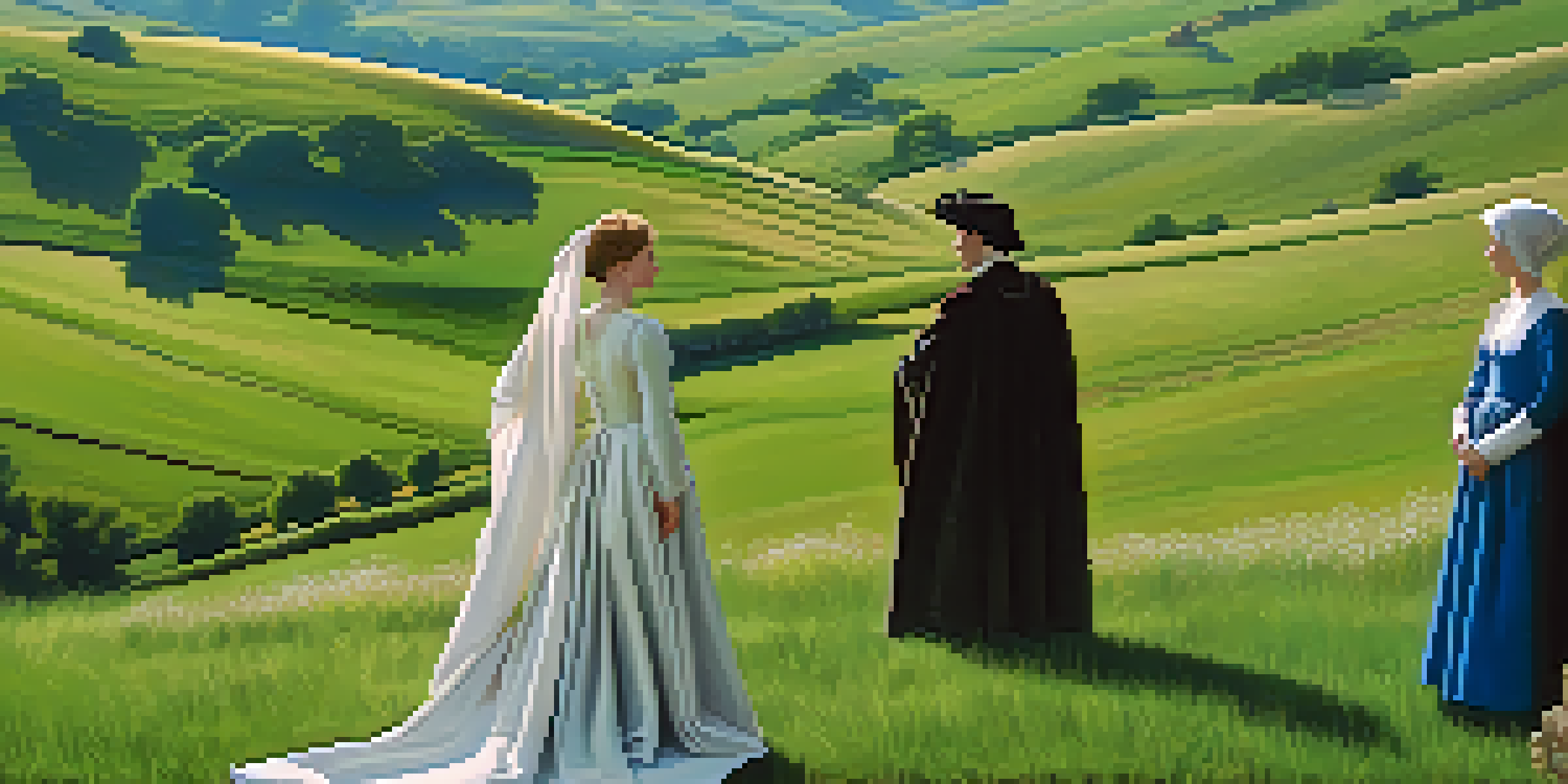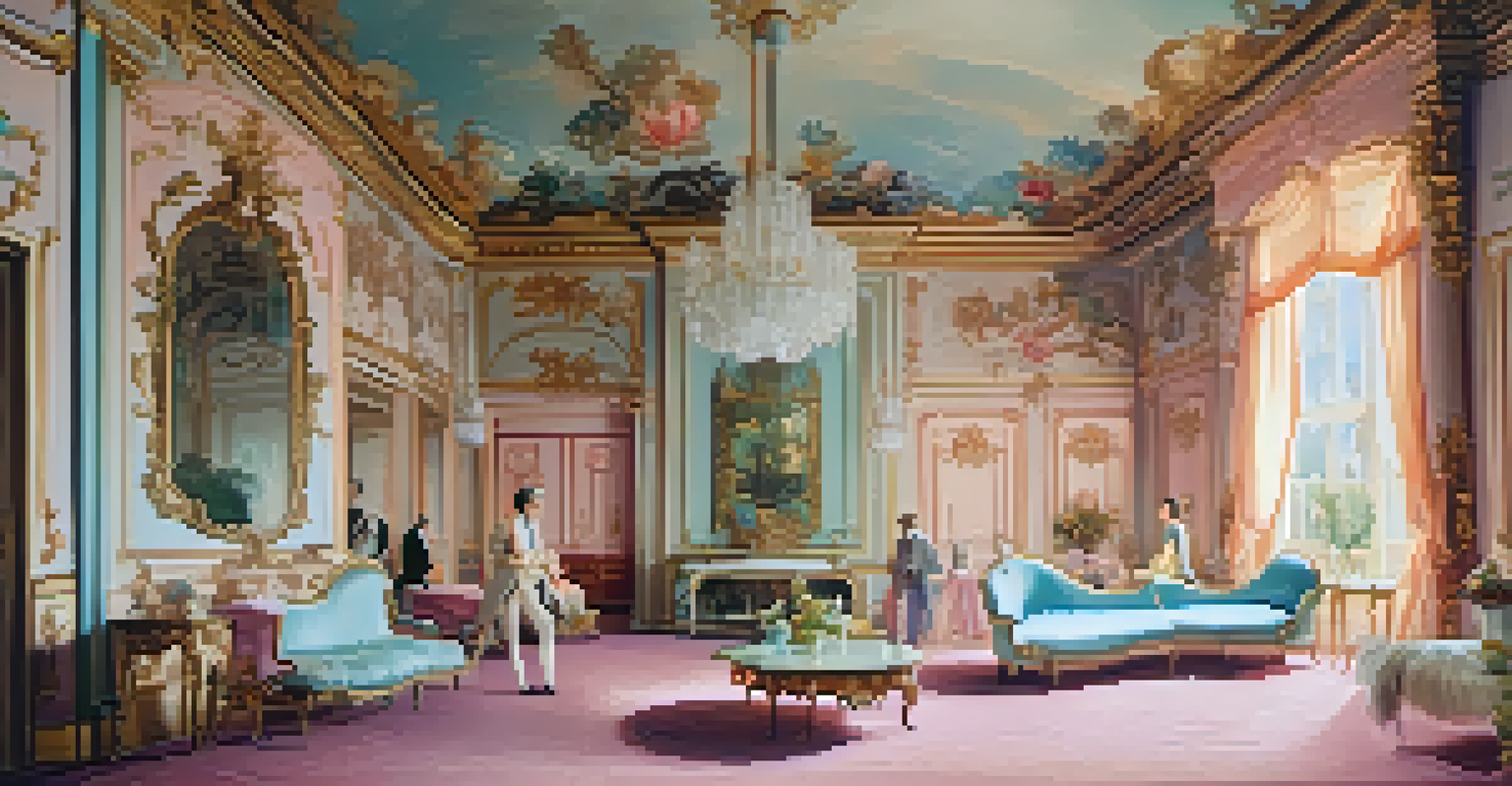The Evolution of Artistic Styles: From Renaissance to Modernism

Understanding the Renaissance: A Cultural Awakening
The Renaissance, spanning from the 14th to the 17th century, marked a profound cultural revival in Europe. Artists began to embrace humanism, focusing on the beauty of the human form and the natural world. This period birthed iconic figures like Leonardo da Vinci and Michelangelo, whose works emphasized realism and perspective. The exploration of classical antiquity inspired a rich tapestry of art that celebrated both the divine and the earthly.
Art is the most beautiful of all lies.
This era saw the introduction of techniques such as chiaroscuro, which created depth and dimension in paintings. Artists experimented with oil paints, allowing for greater detail and vibrant colors. The Renaissance wasn't just about art; it was a holistic movement that influenced literature, science, and philosophy, leading to a more rounded understanding of humanity's place in the universe.
As we appreciate the works of the Renaissance, we can see how they laid the groundwork for future artistic movements. The emphasis on observation and the human experience became a blueprint for artists who followed, sparking a continuous evolution in the art world.
Baroque Art: Emotions and Grandeur Take Center Stage
Following the Renaissance, the Baroque period emerged in the late 16th century, characterized by dramatic expression and grandeur. Artists like Caravaggio and Rembrandt infused their works with intense emotion, using light and shadow to create a sense of movement and depth. This style often conveyed religious themes, aiming to evoke feelings of awe and reverence among viewers.

Baroque art was not just about aesthetics; it was also a response to the Counter-Reformation, where the Catholic Church sought to inspire faith through powerful imagery. The opulence of Baroque architecture, seen in structures like St. Peter's Basilica, mirrored the art of the time, with intricate details and dynamic forms. This period also saw the rise of still life and landscape painting, expanding the scope of artistic expression.
Renaissance: Birth of Humanism
The Renaissance marked a cultural revival that emphasized humanism and realism, inspiring iconic artists like Leonardo da Vinci and Michelangelo.
The emotional impact of Baroque art continues to resonate today, reminding us of the power of art to influence human experience. This period's emphasis on emotion and drama set the stage for future movements, as artists sought new ways to connect with their audience.
Rococo: A Celebration of Lightness and Elegance
The Rococo movement blossomed in the early 18th century, characterized by its playful themes and ornate style. Artists like Antoine Watteau and François Boucher embraced a lighter palette, focusing on themes of love, leisure, and nature. This period shifted away from the heavy emotional weight of Baroque art, favoring elegance and charm in both painting and interior design.
Every creator painfully experiences the chasm between his inner vision and its ultimate expression.
Rococo art often featured asymmetrical designs and intricate details, creating a sense of intimacy and whimsy. Furniture and décor became works of art in themselves, reflecting the luxurious lifestyles of the period's elite. The movement was inherently linked to the rising bourgeoisie, who sought to express their tastes and values through art.
While Rococo may seem frivolous compared to its predecessors, it played a crucial role in shaping modern aesthetics. Its emphasis on beauty and pleasure paved the way for later movements that would challenge traditional boundaries in art.
Neoclassicism: A Return to Classical Ideals
Emerging in the late 18th century, Neoclassicism sought to revive the ideals of ancient Greece and Rome. Artists like Jacques-Louis David emphasized clarity, order, and moral virtue in their works, reflecting the Enlightenment's values. This movement was a reaction against the excesses of Rococo, advocating for simplicity and rationality.
Neoclassical art often depicted historical events and figures, aiming to inspire patriotism and civic virtue. The use of classical themes was intended to convey a sense of timelessness and universality, as seen in David's iconic painting, 'The Death of Socrates.' This focus on moral storytelling resonated deeply with a society grappling with political upheaval and change.
Romanticism: Emotion and Individualism
The Romantic movement celebrated personal emotion and the beauty of nature, encouraging artists to express their individual experiences.
Through its emphasis on reason and morality, Neoclassicism laid the groundwork for modern art movements. Its influence can still be seen today in the continued appreciation for classical aesthetics and ideals.
Romanticism: Embracing Individual Emotion and Nature
The Romantic movement emerged in the late 18th and early 19th centuries as a response to Neoclassicism's rigid structures. Artists like Eugène Delacroix and Caspar David Friedrich celebrated emotion, imagination, and the sublime beauty of nature. Romanticism emphasized individualism, encouraging artists to express their personal feelings and experiences through their work.
Nature became a central theme in Romantic art, often depicted as both beautiful and terrifying. This duality reflected the era's fascination with the unknown and the spiritual, as seen in Friedrich's landscapes that evoke a sense of awe. The movement also aligned with broader societal changes, including the rise of nationalism and the questioning of traditional authority.
Romanticism's focus on emotion and individual perspective opened new doors for artistic expression. This shift laid the foundation for various later movements, including Impressionism and Symbolism, which would further explore the depths of human experience.
Impressionism: Capturing Fleeting Moments of Life
Emerging in the late 19th century, Impressionism revolutionized the art world by challenging traditional techniques and subjects. Pioneered by artists like Claude Monet and Pierre-Auguste Renoir, this movement focused on capturing the fleeting effects of light and color in everyday scenes. Impressionists often painted en plein air, or outdoors, to convey the spontaneity of the moment.
This new approach to painting emphasized brush strokes and vivid colors, allowing for a more subjective interpretation of reality. Impressionism rejected the detailed realism of previous styles, instead presenting a more emotional and immediate experience. This radical shift initially faced criticism, yet it ultimately transformed the landscape of modern art.
Modernism: Redefining Artistic Boundaries
Modernism broke away from tradition, fostering innovation and diverse expressions of identity and culture through movements like Surrealism and Cubism.
Impressionism's legacy continues to influence artists today, as it encourages us to see the beauty in the mundane. Its focus on light and color paved the way for subsequent movements that would explore abstraction and expressionism.
Modernism: Breaking Boundaries and Redefining Art
The early 20th century ushered in Modernism, a movement characterized by a break from tradition and a quest for new forms of expression. Artists like Pablo Picasso and Henri Matisse sought to redefine art by experimenting with abstraction and cubism. This period embraced innovation, encouraging artists to explore new materials, techniques, and ideas.
Modernism was also marked by an exploration of identity, society, and culture, reflecting the rapid changes of the time. Movements such as Surrealism and Dada challenged conventional notions of art and reality, pushing boundaries and sparking conversations about the nature of creativity. The diversity of styles and philosophies during this time showcased an expanding definition of what art could be.

As we reflect on Modernism, we see its profound impact on the art world, inspiring countless artists to think outside the box. This spirit of experimentation and questioning continues to resonate, reminding us that art is an ever-evolving conversation that reflects the complexities of human experience.